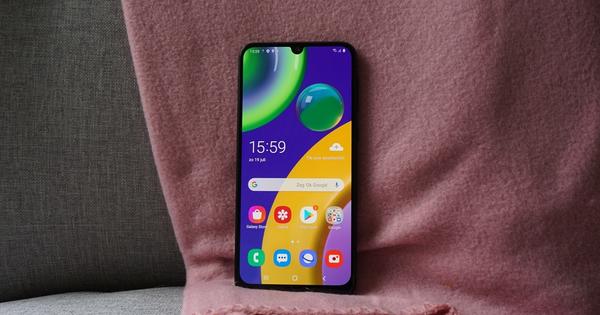Windows 10 is not only a big improvement 'under the hood' compared to its predecessors, it also contains many functions to make working faster and more pleasant. How many of all those clever tricks do you really use? After this article with useful tips for Windows 10 maybe a few more!
Tip 01: Snap those apps
We've known about 'grabbing' apps since Windows 7: by dragging a window to the left or right edge of the screen, the window is pasted there and it fills half the screen. This way you can easily put two apps next to each other, for example Word next to the web browser, or a spreadsheet next to your PDF reader where you have your invoice open. In Windows 10, you can also snap windows to a quarter of the screen. To place windows side by side, drag a window to the edge of the screen, then Windows gives you the choice of the other open programs to choose the window next to it. You can also drag a screen to a corner of your screen. You can also use the keyboard: use the Windows key in combination with the arrow keys. You can also drag the dividing lines between the apps with the mouse so that you are not stuck with a ratio of 25 or 50%.
 You can easily use multiple windows side by side
You can easily use multiple windows side by side Tip 02: Virtual desktops
Virtual desktops are a handy way to use multiple applications at the same time and switch between them quickly, but still keep an overview. For example, you can use your work applications on one desktop and your games on another. On the taskbar you will see an icon with three rectangles. Click on it for the overview screen on which all active desktops can be seen. You can also click on the Windows key+Tab to press. At the bottom you can open new desktops by clicking on the plus sign. You drag apps with the mouse to the desired desktop. It is not possible to place different shortcuts on different desktops or to set a different background image per desktop. There are external tools that can do this.

Tip 03: Your start
For many users, the desktop was actually the 'app launcher': the place from which you launch programs. The start button was only used to shut down the computer. And that while that start menu is actually the most convenient way to find and organize your programs. In the standard configuration, the Windows button opens the menu and you see the most used apps in the top left. Below that, you'll find an alphabetical list of everything you've installed. The real work is on the right, in the form of the tiles that can be adjusted to your own taste. Here you can 'pin' your favorite apps (right click on a shortcut, choose On startfasten). The tiles can be displayed in three sizes. You can also place tiles in folders by dragging one tile over the other. This way you can easily group tiles of apps that belong together. Properly setting up your start menu results in a much clearer selection menu than a desktop full of icons!

Completely customize desktops
Do you like the idea of virtual desktops, but do you want more options? For example, place different icons on different desktops, or set your own background image for each desktop? These kinds of pretty basic functions are not standard in Windows, but you can add them with an external application. The originally German app Dexpot is a free desktop manager that offers all these functions. The app does have some minor bugs when used in Windows 10 and is not being developed very actively (the latest news item is from February 2016), but those who can live with some minor flaws should definitely try this addition. We hope Microsoft will add these features by default through an update.
Tip 04: Start big
One hates it, the other loves it: the Windows 10 start menu can be used to fill the screen. This feature is especially useful for touch screens. To make your start menu work full screen, go to the settings of Windows (Windows key+I), choose you Personal settings and then Start. Here you can also adjust more things to your own taste. In this case, choose the switch Using Start in full screen. At the top left you can choose between the app list (with most used applications) or the tile overview. Go through the rest of the options to see if the other options are set the way you like.

Tip 05: No advertising
Someone at Microsoft thought it was a good idea to put surreptitious advertising in Windows 10. We disagree with that person and find it quite annoying that our neatly modified start menu keeps suggesting that we install Candy Crush. Fortunately, anyone who does not appreciate that can disable these suggestions. Go to Institutions / Personal settings / Start. Disable the option to show suggestions here. You are now free of these small – but oh so annoying – advertising messages between your apps.

Active tiles
A legacy of the Windows 8 metro system is the availability of 'active tiles' for the start menu. However, the question is how often you want to read the news in the small animated blocks. There's something to be said for being able to see at a glance whether you have new emails or what the weather will be like today. If you want to completely get rid of all active tiles (which makes the start menu a lot quieter), you can. In the start menu, right click on the live tile you want to disable, click More and then on Disable Live Tile. He turns into a regular shortcut.
Tip 06: Quick access
Want to get to your frequently used folders quickly? Use 'quick access'. In every Explorer window, on the left you will find a list called Quick access, to which you can add favorite locations yourself. In Windows 7, this item was still called Favorites and it worked slightly differently. Select a location Add quick access, you do this by right-clicking on the folder and Pin to quick access to choose. You can also drag the relevant folder to the menu until you Add to quick access appears. Release the folder and there will now be a shortcut in the menu. This way you can easily access your favorite locations from any Explorer window.
Windows also lends a hand here and automatically adds frequently used folders to the quick access menu. You can delete it manually by right clicking on it and Unpin from Quick Access to select. If you want to delete the entire automatic list, you can do that too. To do this, open an explorer window, select Image and then right click Change folder and search options. In the new window you will find the button Clear Explorer History, which clears the entire list of frequently used locations. Windows will automatically fill it again unless you do this in the same screen under Privacy turns off.
 To use the Cortana personal assistant, you need to change your region and language
To use the Cortana personal assistant, you need to change your region and language Tip 07: Cortana
Unfortunately, Microsoft's virtual assistant Cortana still does not understand Dutch. That doesn't mean you can't use it. Cortana works just like Siri and is fully integrated into Windows 10. That means you can perform advanced searches, launch applications, and ask Cortana to schedule calendar appointments and reminders. For those who are proficient in the English language, this is certainly an addition to the workflow. To use Cortana, you need to switch Windows 10 to a region where Cortana is functioning. This means that you Institutions / Time & Language Windows should tell your region United States or United Kingdom is, and the language English. This does change your entire Windows 10 installation to an English version, and the Store also changes regions! As a result, some apps may not be available. But Cortana is a really useful and productive assistant, so it's worth a try. If you're not happy with how it all works, you can simply switch the region back to the Netherlands. Cortana will then disappear again, until Microsoft makes a Dutch version of course.

Tip 08: Quick search
Finding your files may take a while. Even if you know where they are, you'll often have to click through a number of directories before you find what you're looking for. Fortunately, Windows 10 has a really fast search function that can help you find anything in less than a second. He's just a little hidden. You can search by pressing the Windows button and just typing. As you type, various search results appear, grouped by source. Very useful for quickly looking up files that you want to get started. And by the way, also great to use to start a program very quickly (for example: press Start, type paint and press Enter). You will also get suggestions of applications you can download from the Store here.
Tip 09: Basal Start
All those advanced features in Windows 10 are very nice, but sometimes you want to go back to basics, for example to the old start menu. Windows 10 has a very basic start menu built in: by right-clicking on Start, a menu appears in which you can quickly request system properties, start a command prompt or open the explorer. Without all the bells and whistles that are processed in the extensive start menu.

